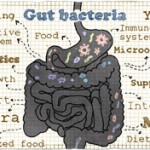“We wanted our patients to focus on changing their habits. We didn’t want them to focus on losing weight, because we know this is often difficult for them,” said Dr. Guma.
‘People with RA know they have a chronic disease & that they will need chronic medications. They all seek additional sources of relief or treatments with fewer side effects,’ including diet, said Monica Guma, MD, PhD.
High Adherence Rate
In a two-week, pre-intervention phase, participants were asked to record what they normally ate. Patients were given physical exams, blood tests and the Health Assessment Questionnaire (HAQ) to measure disease activity, surveys to measure Visual Analogue Scale (VAS) pain and fatigue scores, and stool samples for metabolome and microbiome assessments.
The final study included 20 adults with diagnosed RA defined by the 2010 ACR/EULAR classification criteria who had at least three tender and three swollen joints. Patients who were pregnant or lactating, who already followed a vegetarian or vegan diet, or who required a medication change during the study period were excluded. Most participants were female and obese, and the median age was 57.1 years old. Higher baseline disease activity among participants correlated with a lower intake of anti-inflammatory foods and higher amounts of sugar-sweetened sodas, red meat, milk or gluten.
Participants were asked to follow the new eating plan for two weeks, although some continued for a week longer, and overall adherence was high, said Dr. Guma. Participants could choose from seven days’ worth of suggested meal plans with optional help from a dietitian. Daily menus included one mandatory smoothie, three meals and two snacks that included a mix of potentially anti-inflammatory ingredients, such as enzymatic fruits (e.g., mango, pineapple and papaya), plain yogurt with no added sugar, leafy green vegetables, oats, avocado, walnuts, honey, miso and lean proteins.
Participants were encouraged to try new ingredients, such as chia seeds, because they contain tryptophan, which is associated with a boost in serotonin for pain relief, as well as flaxseed, turmeric, ginger, black pepper or green tea. Patients were asked to eat red meat no more than twice a week, reduce dairy products other than yogurt—coconut and almond milk were suggested options for smoothies—and eat less gluten and nightshade vegetables.
After 14 days on the diet, participants had follow-up physical exams, blood and stool tests, and completed disease activity and health assessment questionnaires. Although their mean body mass index barely dipped from day 0 to 14—as expected—some patients had dramatic improvements in clinical symptoms, said Dr. Guma. Mean fatigue scores improved from 3.975 to 2.49, mean morning stiffness scores improved from 46.65 to 29.25, pain scores from 3.895 to 2.49, mean Clinical Disease Activity Index (CDAI) scores from 25.405 to 12.68, and Disease Activity Score-28 for RA with CRP (DAS28-CRP) scores from 3.715 to 2.619.



